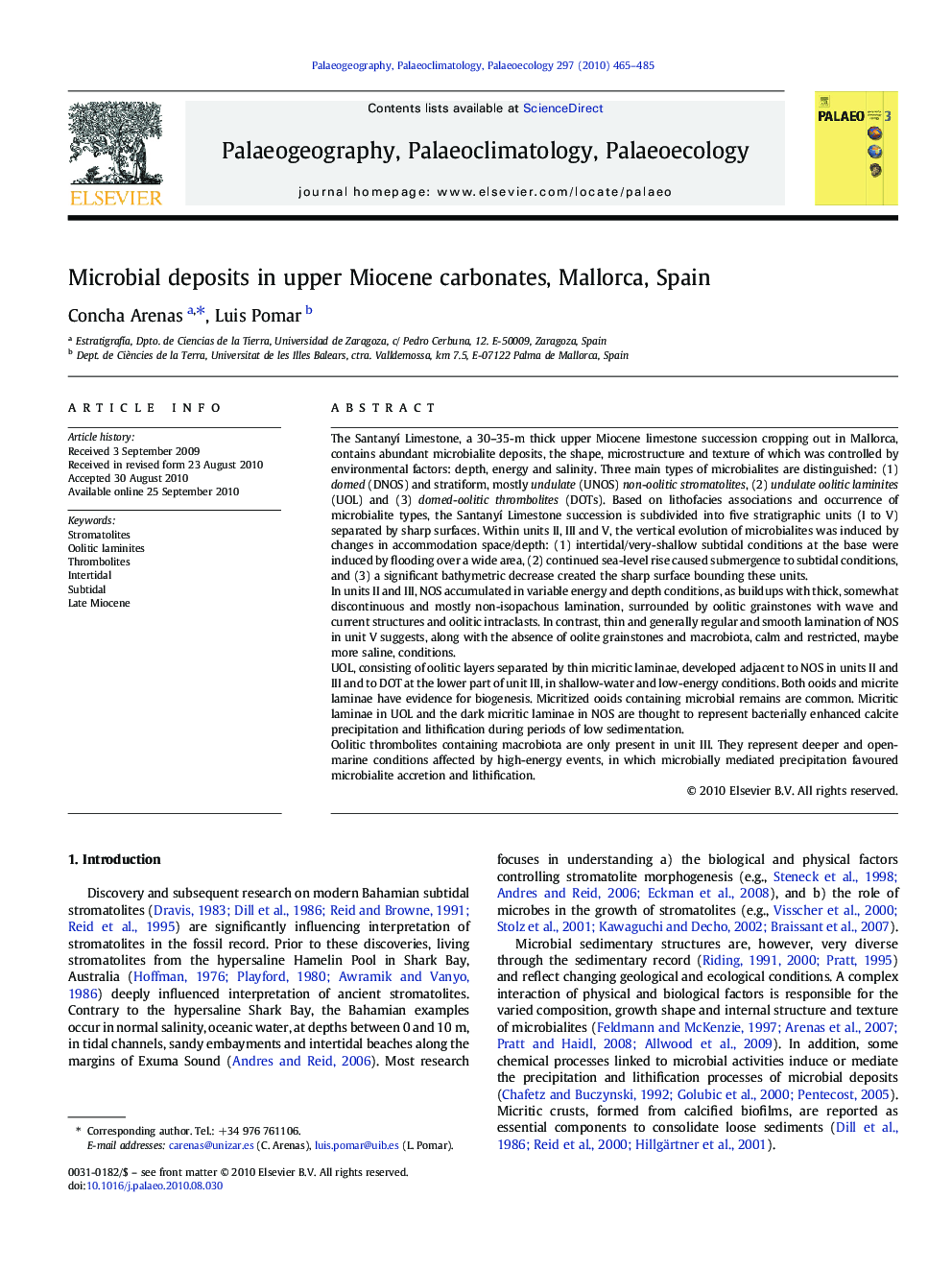| کد مقاله | کد نشریه | سال انتشار | مقاله انگلیسی | نسخه تمام متن |
|---|---|---|---|---|
| 4467490 | 1314079 | 2010 | 21 صفحه PDF | دانلود رایگان |

The Santanyí Limestone, a 30–35-m thick upper Miocene limestone succession cropping out in Mallorca, contains abundant microbialite deposits, the shape, microstructure and texture of which was controlled by environmental factors: depth, energy and salinity. Three main types of microbialites are distinguished: (1) domed (DNOS) and stratiform, mostly undulate (UNOS) non-oolitic stromatolites, (2) undulate oolitic laminites (UOL) and (3) domed-oolitic thrombolites (DOTs). Based on lithofacies associations and occurrence of microbialite types, the Santanyí Limestone succession is subdivided into five stratigraphic units (I to V) separated by sharp surfaces. Within units II, III and V, the vertical evolution of microbialites was induced by changes in accommodation space/depth: (1) intertidal/very-shallow subtidal conditions at the base were induced by flooding over a wide area, (2) continued sea-level rise caused submergence to subtidal conditions, and (3) a significant bathymetric decrease created the sharp surface bounding these units.In units II and III, NOS accumulated in variable energy and depth conditions, as buildups with thick, somewhat discontinuous and mostly non-isopachous lamination, surrounded by oolitic grainstones with wave and current structures and oolitic intraclasts. In contrast, thin and generally regular and smooth lamination of NOS in unit V suggests, along with the absence of oolite grainstones and macrobiota, calm and restricted, maybe more saline, conditions.UOL, consisting of oolitic layers separated by thin micritic laminae, developed adjacent to NOS in units II and III and to DOT at the lower part of unit III, in shallow-water and low-energy conditions. Both ooids and micrite laminae have evidence for biogenesis. Micritized ooids containing microbial remains are common. Micritic laminae in UOL and the dark micritic laminae in NOS are thought to represent bacterially enhanced calcite precipitation and lithification during periods of low sedimentation.Oolitic thrombolites containing macrobiota are only present in unit III. They represent deeper and open-marine conditions affected by high-energy events, in which microbially mediated precipitation favoured microbialite accretion and lithification.
Journal: Palaeogeography, Palaeoclimatology, Palaeoecology - Volume 297, Issue 2, 10 November 2010, Pages 465–485